Strange, Bizarre and Scary Deep Sea Creatures Found in 2022 (8 Photos)
Deep beneath the waves, far from the warmth and light of the Sun, lies a world of unimaginable darkness and oppressive power. The depths of the sea are a place of mystery and wonder, home to creatures that have evolved to survive in the harshest conditions. 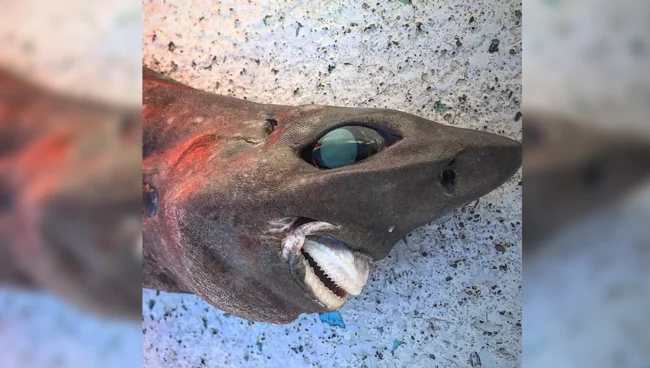
From translucent jelly fish to gummy squirrels, these bizarre deep-sea creatures are unlike anything seen before. Join us on a journey into the ocean depths and discover the weird and wonderful creatures of the deep that call the ocean home.
Gummy squirrel 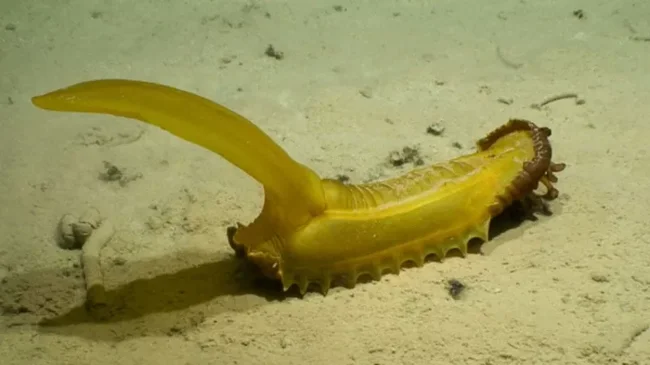
Deep in the depths of the Pacific Ocean lies a world full of strange and bizarre creatures, some of which have yet to be discovered. Among them is a jelly-like creation that scientists have dubbed "jelly squirrel."
At first glance, the gummy squirrel looks like half a peeled banana, but upon closer inspection it becomes clear that it is a unique sea cucumber. The creature, up to 60 cm long, is a rare find discovered by researchers studying the seabed of the Pacific Ocean's Clarion-Clipperton zone, located between Hawaii and Mexico.
The sea cucumber, with its unusual appearance and texture, has attracted the attention of scientists around the world. Researchers are now studying this creature to learn more about its biology, behavior and how it fits into the complex ecosystem of the deep ocean.
Strange blue sponge 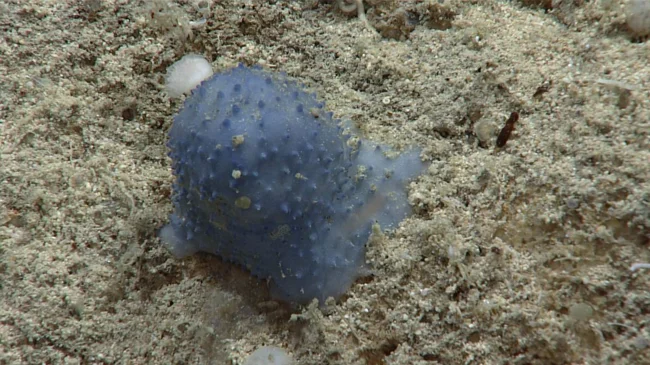
Researchers from the National Oceanic and Atmospheric Administration (NOAA) have discovered mysterious creatures on the seabed off St. Croix, one of the Virgin Islands.
The creatures, which were spotted by an ROV (remotely operated underwater vehicle) and broadcast online, were described as "blue goo" and sat motionless on the ocean floor at a depth of 407-611 meters.
Researchers collected samples of the mysterious blue goo for further study. The samples revealed that the creatures' blue color is caused by a pigment called biliverdin.
Further analysis revealed that the mysterious blue goo is actually a new species of tunicate, a species of marine invertebrate that includes three classes. The new species was named Didemnum saintcroixensis, and was described as having a "fleshy and firm" texture.
Tunicates play an important role in marine ecosystems as they filter large amounts of water and are an important source of food for many marine animals.
Alien shopping bag 
The strange creature was spotted by chance when researchers aboard the Nautilus were using an ROV to study the seabed.
At a colossal depth of more than 2000 meters, they discovered a strange, previously unseen creature with a unique appearance.
This creature had a long tubular body that was almost completely transparent. Inside, his intestines glowed bright orange, making it look like a bag of chips was floating in the ocean.
Some have suggested that this could be evidence of extraterrestrial life. The bizarre animal is actually a sea cucumber from the family Elpidiidae, which collects sea snow that falls on the seabed.
Scientists, however, were quick to point out that the discovery of the sea cucumber is still an amazing find, as it is an incredibly rare species that has never before been observed at such depths.
Jelly fish 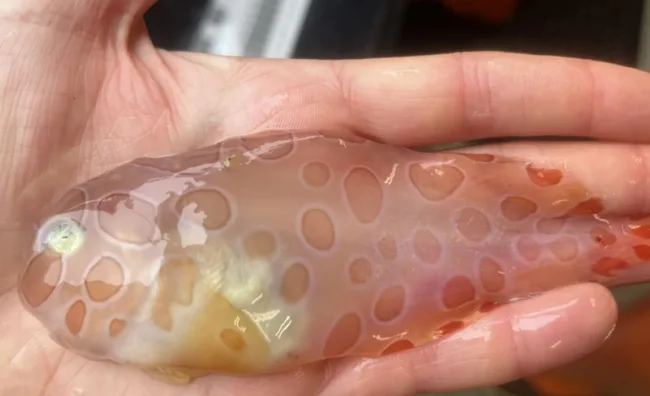
These fish were recently discovered by NOAA researchers off the coast of the Aleutian Islands in Alaska. They have a unique appearance, with a translucent body covered in ringed spots and an unusual suction cup on their belly, which is actually a modified fin that allows them to cling to the seabed.
Jelly fish are well adapted to life in the deep sea and can live at depths of up to 830 meters. Their gelatinous consistency allows them to withstand the crushing pressure of the deep sea, and their translucent body helps them hide from predators.
Despite their unique characteristics, much of their life history and behavior remains a mystery to scientists.
Shark with a human smile 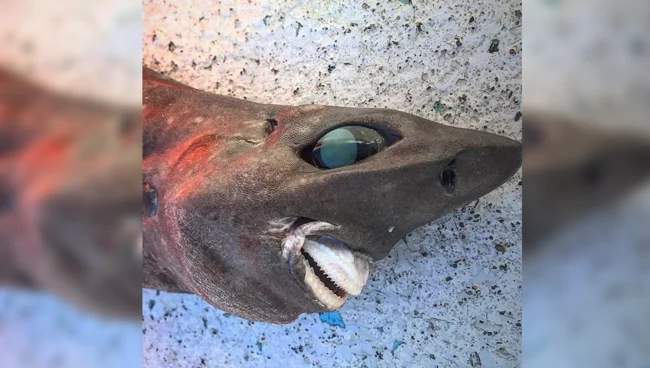
A creepy "smiling" shark was caught by a fisherman off the coast of Australia, and a photo of the unusual specimen quickly went viral on social media. The fisherman was reportedly shocked by the strange appearance of the shark, which he described as having a "big grin".
Shark experts were also intrigued by the unusual specimen and began to weigh in on what species it might be. The exact species of the shark is not yet known, but some experts believe that it belongs to the genus of short-spined sharks.
Despite the attention the smiling shark has received, it's important to remember that many deep-sea creatures are still largely unknown to science. The deep sea is a vast and largely unexplored environment, and many of the species found in this realm have never been seen by humans before.
Deep sea squid 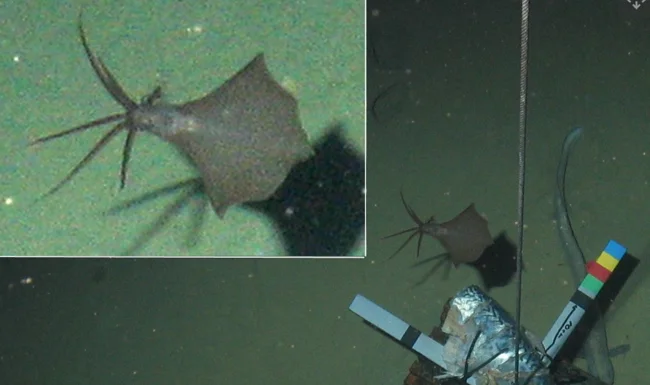
As a team of explorers aboard the vessel Falkor explored the depths of the Philippine Trench in search of the lost World War II destroyer USS Johnston, they made an unexpected discovery.
It was the deepest-swimming squid ever recorded, reaching a depth of 6,200 meters. The team was amazed by the size of the creature, which had long, thin arms and fins that resembled ears, giving it a unique appearance.
The researchers were also able to detect four dumbo octopuses at the same depth, adding to their already impressive results. The squid's discovery broke the previous record held by another largefin squid discovered at a depth of 4,700 meters.
As exciting as this discovery was, the explorers never lost sight of their main goal - finding the site of the USS Johnston shipwreck. 
Despite being distracted by the amazing discovery, the crew remained committed to their mission and continued to scour the ocean floor for any sign of the missing destroyer.
Thanks to their determination, they eventually succeeded. The team discovered the wreckage of the destroyer USS Johnston at a depth of 6,100, bringing relief to the families of those who once served aboard the ship.
The discovery of the greatfin squid and the successful search for the USS Johnston demonstrated the incredible capabilities of modern technology and the incredible secrets that still lie beneath the ocean's surface.

